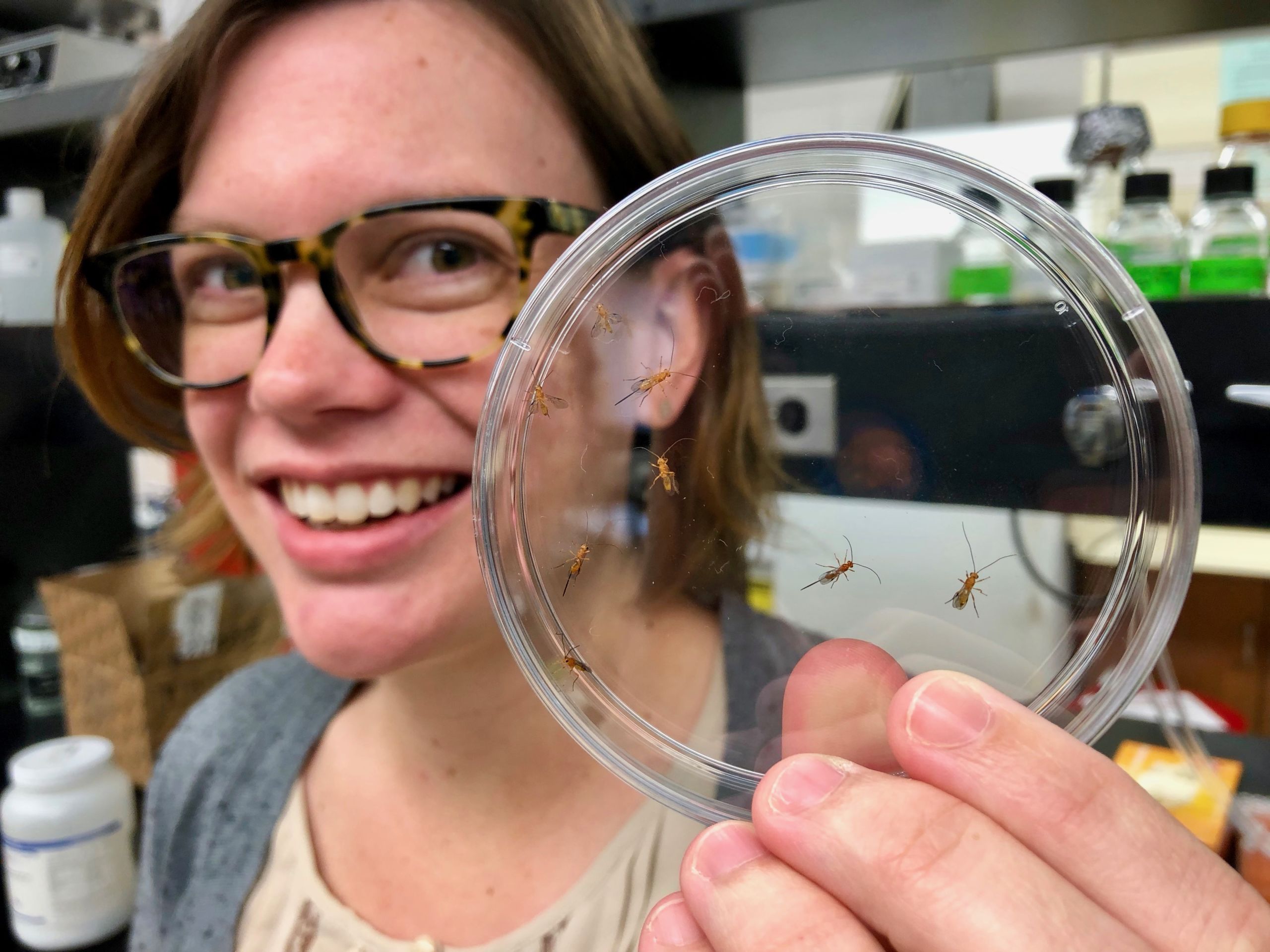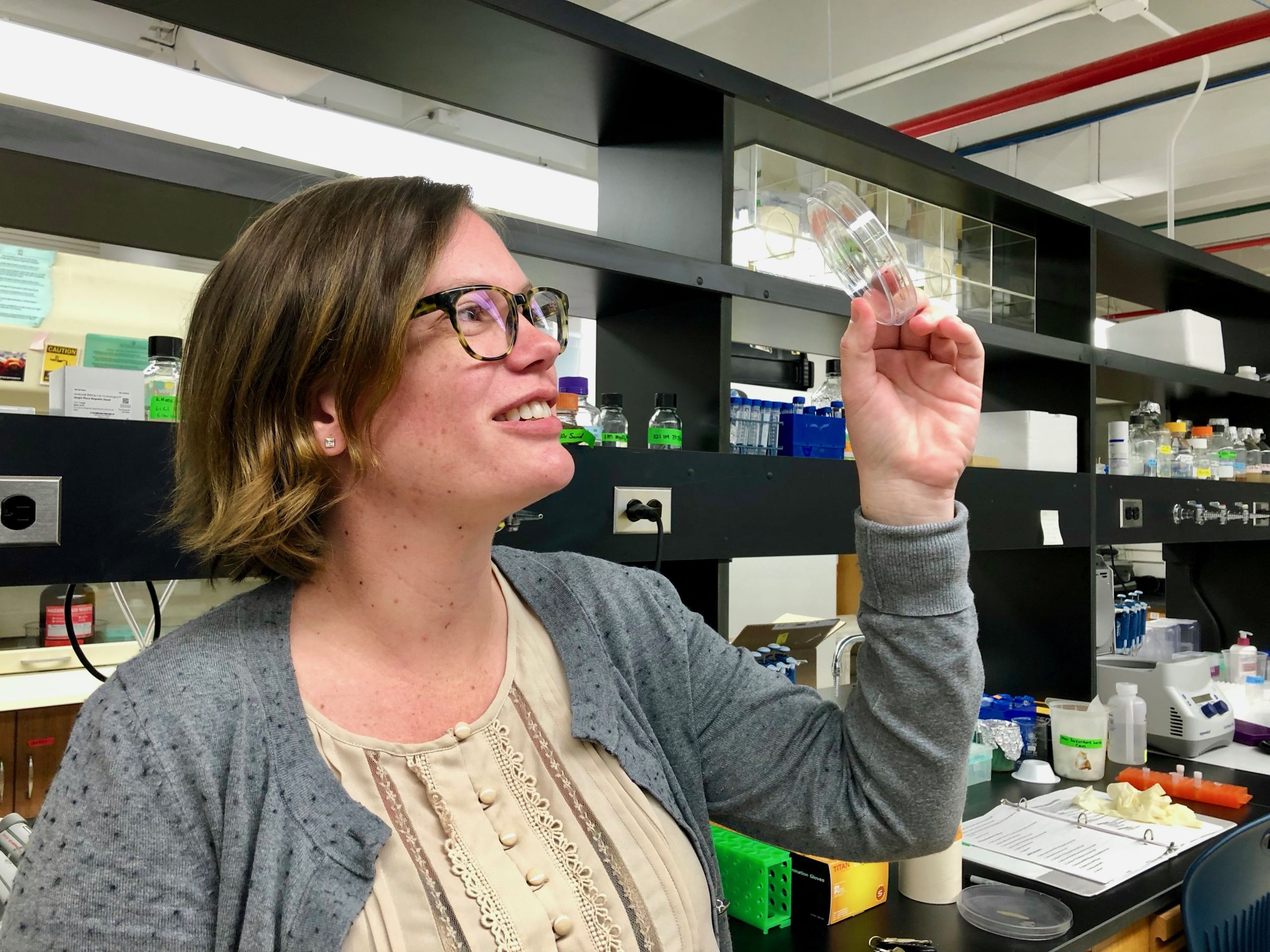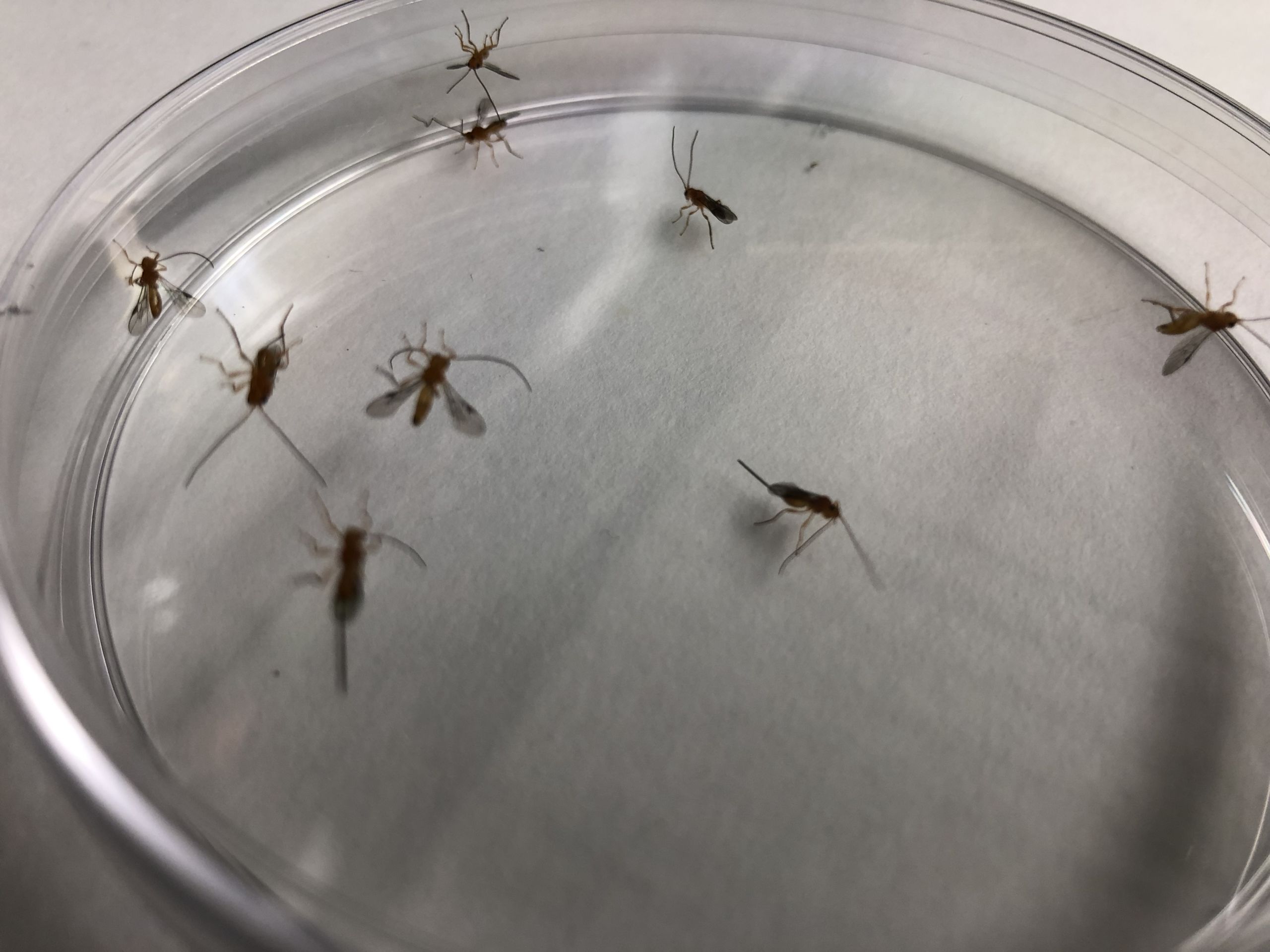The Zombie Makers
Gaelen Burke uses a wasp's viral DNA defenses to battle pests


Parasitic wasps — insects that lay their eggs in other insects to provide their offspring a food source — are often seen as the holy grail of biological pest control.
Researchers rear millions of wasps in labs in hopes that they’ll colonize costly crop pests like tomato hornworms or aphids.
While researchers are looking for ways to weaponize the wasps, they are also trying to find out how the wasps evolved such an unorthodox way of having babies.
“How is it that these parasitoids can use another insect as a home for its eggs or its food source without that insect fighting it off?” asks Gaelen Burke, assistant professor of entomology at CAES.
The answer, Burke said, is tied to the wasp’s microbiome — specifically a tiny immunosuppressant virus that has coevolved with the wasp and is present inside the DNA of each of the wasp’s cells.
When the parasitic wasp lays her eggs in an unlucky host, she also infects the host with an immune-suppressing virus, which allows her eggs to develop without being attacked by the host’s immune system.
Burke works specifically with tiny braconid wasps that use a class of viruses called bracoviruses that are able to hijack the cells of their hosts without destroying them.
A typical virus, say a cold virus, invades a cell for the sole purpose of making more viruses. When the virus-copying process is over, the viruses destroy the cell. In collaboration with CAES entomologist Michael Strand, Burke has found that bracoviruses invade the cell and slip their DNA into the animal’s overall genome. It doesn’t kill the cell, but it does take it over, shutting down some immune defenses and promoting pro-wasp behaviors.
“Putting the viral DNA into the host cells’ DNA allows the virus to hijack the cells long-term so that it can express the genes that are really important to the wasp’s development for the rest of the caterpillar’s life,” Burke said.
Burke is studying how the wasp and its zombifying virus have coevolved and how the virus is passed from parent to offspring.
“These viruses are inherited,” she said. “The virus genome is there in the wasp’s genome and it gets inherited every generation. So, the virus is relying on the wasp to survive because that’s its only mechanism for getting to the next generation, and the wasp relies on the virus to survive because it needs the virus to subvert its hosts’ defenses.”
Scientists have been able to trace the relationship between the wasps and their viruses back 100 million years. Today about 55,000 types of wasps carry these types of inherited viruses.
For more information about parasitic wasps and their viruses visit the Burke lab’s website at site.caes.uga.edu/burkelab?. •



